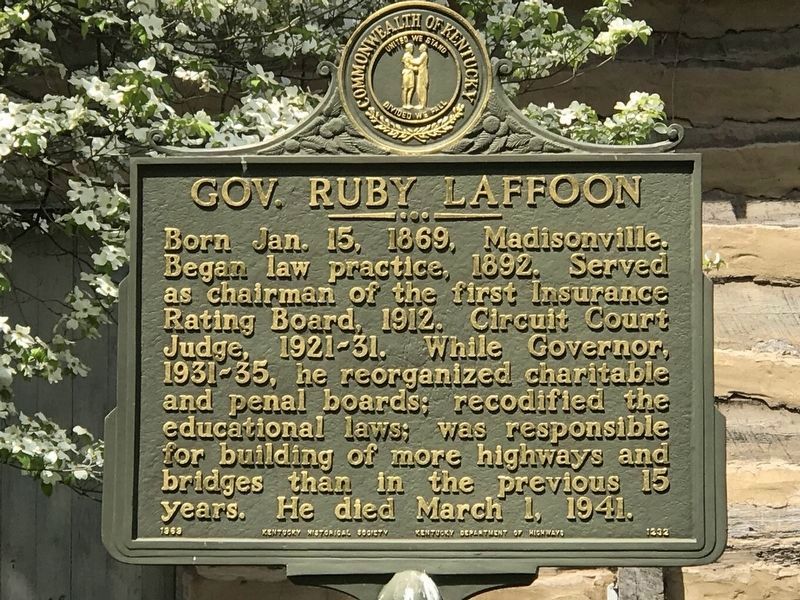James Preston Loyd, was born Aug. 23, 1873 and died Dec. 8, 1953 and is buried in the Crayne Cemetery. Mr. Loyd was a retired farmer, and an elder in the Crayne Cumberland Presbyterian Church, of which he was one of the charter members.
This article first appeared in The Crittenden Press on February 1, 1906. Mr. J. P. Loyd shares some of his memories and knowledge of the time with the readers of the Press. These old articles help us to know what was going on in our county and town many years ago.
***
Crittenden Press, February 1, 1906. Editor Press: As I sit thinking over past incidents, and quite a few are yet fresh in my memory, I will share with your readers some happenings in the year 1886.
I was teaching school at the time at old Cookseyville in this county, and in those days we would send in a monthly report of our schools, which Mr. Walker, being scarce of news, I suppose would publish most any article in writing sent him.
Here are some items that may be interesting to many of your readers. First I will give the names and business of some of our people who advertised in the Press in those days.
***
Businesses of the day
Crayne & Henry, dealers in tombstones, A. E. Clark, transferring and handling drummers.
Dr. T. H. Cossitt and J. H. Hillyard were selling drugs, Pierce & Son was in the business of selling hardware, Woods & Walker and G. C. Gray, selling dry goods, also Sam Gugenheim was selling a bankrupt stock of goods sent here by his brother for Sam to dispose of.
K. B. and R. F. Dorr and Jesse Olive were selling furniture. P. R. Finley selling groceries.
W. M. Morgan shaving his friends, R. L. Tinsley laying brick and Misses Orr & Steward were trimming the ladies hats.
***
Political Men I will next notice the name of the boys who were burning the county with political fire. The following were candidates:
Circuit Judge, M. C. Givens and Ben P. Cissell; Commonwealth Attorney, J. H. Powell; County Judge, Lemuel H. James, John A. Moore and John B. Kevil; County Attorney John G. Rochester and W. C. Monroe Travis; County Clerk Will Hill and Dave Woods; Circuit Clerk Harry A. Haynes and Henry A. Hodge; Sheriff Albert J. Pickens and Wm. F. Summerville; Assessor Thomas J. Yandell; School Superintendent E. E. Thurman and Geo. W. Perry; Jailer Sid Lucas, M. L. Hayes, and Al Wilborn; Surveyor George H. Crider and Wm. K. Minner; Coroner Jas. F. Flanary; Constable, Marion Prescient John Grissom.
Now while on this line of thought and in order to make it more interesting to the elder people I will give something of the men and incidents of the early history of Crittenden County.
The first circuit court of Crittenden was held at the house of Samuel Ashley, on the 28th day of May 1842. Judge Wiley P. Fowler preceding. The court appointed Harvey P. Bigham clerk of the court.
There were five lawyers present at the term. They were George W. Barter, Francis H. Dallam, Patterson C. Lander, Robert H. Marr and Sumner Marble.
There was only one civil suit on the docket and that was a chancery case. Only three indictments were found during the term, and strange as it may seem, there was a woman in two of the cases. The whole proceedings of the term, organizing the term, impaneling the juries, appointing officers, recording oaths and bonds, all only occupied a little over three pages of space in the order book.
The office of clerk, which is so desirable now, would not have furnished much roast beef and patent plows at that time.
***
First Grand Jury
The first grand jury impaneled in the county was as follows: Alexander Dean, Edward Ashley, William Ashley, Matthew Parmley, Martin Hammond, William Hoggard, John M. Wilson, Isaac Loyd, Jacob Gill, George Melton, John F. Wilson, Uriah Witherspoon, Andrew J. Hill, Thomas Akers, and Andrew J. Hill, and Angus McAlister. The last surveyor, Andrew J. Hill, died a few months ago.
But the descendants for the list of honored patriots constitutes a large and respectable portion of the present population of the county who can refer back, with pride to their origin.
The next circuit term was held at the brick church near Marion, for the reason it being impracticable on account of the inclemency of the weather, to hold a court at the house of Samuel Ashley the place designated by law. (The brick church in this statement was located on the corner of the Old Marion Cemetery near were Hwy. 60/Gum St. and Moore St. meet today.)
This court was begun on the 28th day of November, 1842. The following lawyers were sworn as member of the bar; David W. McGoodwin, Willis G. Hughes, Robert A. Patterson, Livingston Lindsey, W. H. Calvert, Hiram McElroy and John W. Headley. Most of these men became
John H. Bruff was the first jailer and he received for his services in attending on court, such as making fires, and other duties assigned by the court, for a whole term of circuit court a sum of ten dollars. The first court house our county had was not occupied until October 1843.
***










%20(2).jpg)










.jpg)






%20(Small).jpg)









